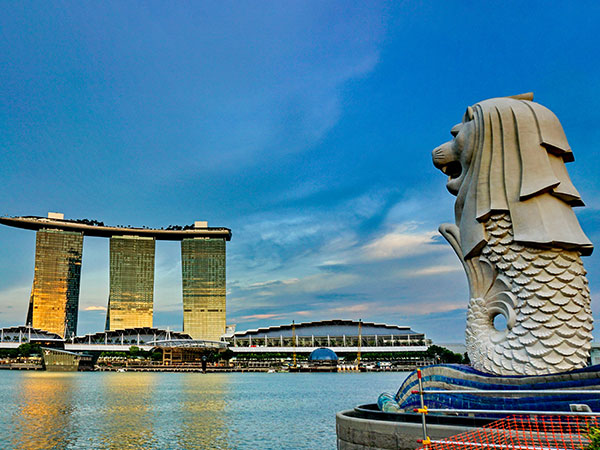



The United States of America (USA), is a country primarily located in North America. It’s a federal republic composed of 50 states. The USA is renowned for its vibrant cities, diverse culture, stunning natural landscapes, and iconic landmarks like the Statue of Liberty, the White House, and the Grand Canyon, along with its status as a global leader in innovation and entertainment. Many people find that working and settling in the USA offers significant advantages, particularly for those seeking career growth and opportunities. The US has a dynamic job market, especially in sectors like technology, finance, and healthcare, with strong currency stability. The U.S. welcomed an estimated 66.5 million international visitors. This figure represents a 31% increase from the previous year. By 2028, the total number of international arrivals is projected to reach 96.8 million.
Settling in the USA can offer many advantages, especially for those seeking educational opportunities, career growth, and a higher standard of living. The US boasts world-renowned universities and a robust job market, particularly in fields like technology and healthcare. Additionally, the diverse cultural landscape and opportunities for personal growth can be appealing for individuals seeking a new life.
A Green Card, officially called a Permanent Resident Card, grants an individual the right to live and work in the United States indefinitely. It’s a document issued by the U.S. government, proving a person’s lawful permanent resident (LPR) status, which allows them to reside in the U.S. permanently and eventually become a citizen.
Economic and Professional:
1. Better employment prospects: The US offers a strong economy and numerous career opportunities, particularly in fields like technology, healthcare, and finance.
2. Entrepreneurial opportunities: The US provides a fertile ground for entrepreneurs, with access to funding and resources to start and grow businesses.
3. Improved quality of life: The US offers a higher standard of living compared to many other countries, with better infrastructure, healthcare, and safety.
4. Access to world-class education: American universities and colleges are renowned for their quality and research opportunities, attracting many international students, including a large number of Indians.
5. Diverse cultural experiences: The US is a multicultural society, with a wide range of cuisines, traditions, and perspectives.
The US immigration process involves several steps, primarily based on either family ties or employment, and often includes a petition, application, and potential interview. Foreign citizens seeking to immigrate need to be sponsored by a U.S. citizen or legal permanent resident or have a job offer from a U.S. employer.
Migrating to the US as an employee typically involves obtaining an employment-based immigrant visa, also known as an EB visa. This allows you to live and work permanently in the US if you possess the right skills, education, and/or work experience. Some EB visa categories require a permanent job offer from a U.S. employer, who would then sponsor and file an immigrant petition on your behalf.
Migrating to the US through the investor route, primarily via the EB-5 visa program, involves investing a substantial amount of capital in a qualifying U.S. business and creating jobs. The EB-5 program allows foreign investors and their families to become permanent residents and eventually citizens, while contributing to the U.S. economy.
Here’s a general outline of the immigration process:
1. Sponsorship and Petition:
A US citizen or lawful permanent resident (green card holder) or a US employer can sponsor the foreign citizen. This involves filing a petition with USCIS, such as Form I-130 for family-based immigration or Form I-140 for employment-based immigration.
2. USCIS Review and Approval:
USCIS reviews the petition to determine if it meets the requirements of the law.
3. Visa or Adjustment of Status:
Once the petition is approved, the foreign citizen can apply for an immigrant visa at a US embassy or consulate (if outside the US) or apply to adjust their status to permanent residence while in the US.
4. Medical Exam and Biometrics:
As part of the visa application process, the foreign citizen will typically need to undergo a medical exam and provide fingerprints and other biometric data.
5. Interview:
A consular interview (for those applying for a visa) or an adjustment of status interview (for those inside the US) will be held.
6. Final Approval and Admission:
If the application is approved, the foreign citizen can receive an immigrant visa (if outside the US) or adjust their status to a lawful permanent resident (Green Card). They can then enter the US and begin living and working permanently, or continue their current status as a permanent resident in the US.
Working in the USA can offer significant advantages for international employees, including high salaries, diverse career opportunities, and access to a robust economy. However, the high cost of living and complex healthcare and immigration systems are significant factors to consider. The US job market is highly competitive, demanding adaptability and a proactive approach to succeed.
The US job market shows a mix of opportunities and trends. While job openings are generally rising, with notable gains in retail, finance, and healthcare, specific sectors like professional and business services are experiencing declines.
Demographically, the workforce is predominantly White (76.5%), with Hispanics or Latines making up 18.8%, Black people 12.8%, and Asian people 6.9%. Unemployment rates vary by demographic group, with rates for adult men and women being similar, while rates for teens and certain racial/ethnic groups are higher.
Non-Immigrant Employment
1. H-1B: For highly skilled workers in specialty occupations, requiring a bachelor’s degree or equivalent.
2. H-2A: For temporary agricultural workers.
3. H-2B: For temporary non-agricultural workers.
4. L-1: For intracompany transfers (executives, managers, specialized knowledge).
5. O-1: For individuals with extraordinary abilities in science, arts, education, or athletics.
6. TN: For Canadian and Mexican citizens in specific professional occupations.
7. E-1, E-2, E-3: For those with certain treaty relations and businesses.
Immigrant Employment
1. EB-1: For individuals with extraordinary abilities, prominent professors, and executives with international experience.
2. EB-2: For professionals, skilled workers, and those with advanced degrees.
3. EB-3: For skilled workers, professionals, and other workers.
4. EB-4: For special immigrants.
5. EB-5: For immigrant investors.
The US has abundant high-paying jobs for skilled professionals from across the globe. It is for this reason that millions of immigrants aspire to obtain a US Work Visa. Candidates seeking in-demand Jobs in the USA for Indians can choose from several roles and sectors.
| so.no. | jobs |
|---|---|
| 1 | Prosthodontists |
| 2 | Chief Executives |
| 3 | Nurse Practitioners |
| 4 | Dentists |
| 5 | Pediatricians |
| 6 | Airline pilots, Flight Engineers & Co-Pilots |
| 7 | Computer & Information System Managers |
| 8 | Architectural Managers |
| 9 | Advertising, Promotion & Marketing Managers |
| 10 | Financial Managers |
| 11 | Analytical Managers |
| 12 | Social Media Strategist |
| 13 | IT Manager |
| 14 | Biochemist |
| 15 | Database Administrator |
| 16 | Mechanical Engineer |
| 17 | Civil Engineer |
| 18 | Medical Scientist |
| 19 | Cartographer |
| 20 | Computer Network Architect |
| 21 | Geoscientist |
| 22 | Accountant |
| 23 | Web Developer |
To apply for a US visa, individuals need to complete the online nonimmigrant visa application (DS-160), pay the visa fee, and schedule an interview appointment at the US Embassy or Consulate. Supporting documents, such as proof of ties to the home country and travel itinerary, are also required.
An individual can be eligible for it if he\she is:
There are many types of a US work visa issued by the US Government to citizens of other nations. However, foreign workers can apply for specific visa types based on the country they are citizens of. Following is the checklist of non-immigrant US work visa for Indians based on the type of work you will be doing:
| US work visa categories | Description |
|---|---|
| H1B (specialty occupation) | The applicant must hold a bachelor’s or higher degree (or an equivalent degree) to qualify for an H1B visa. Your prospective employer is required to file a labor condition application with the Department of Labor. |
| H2B (skilled and unskilled workers) | H2B visa allows foreigners to get a temporary/ seasonal job in the United States for which there is a shortage of U.S. workers. The prospective employer needs to obtain a Department of Labor certification so that the visa application can be initiated. |
| H3 (trainee) | You need an H3 visa to visit the US to receive training from an employer in any field, other than graduate education, for up to 2 years. |
| H4 (dependents) | Spouses and unmarried children (under age 21) of the principal holder of an H visa can apply for an H4 visa to accompany the principal visa holder to the United States. However, the dependents are not allowed to work in the US. |
| L1 (Intra-company transferees) | An L1visa is issued to employees of international companies who are being transferred to a parent branch, affiliate, or subsidiary of the same company in the United States. You must be at the managerial or executive level to qualify for an L1 visa. Your US company or affiliate must have an approved petition form to the USCIS before you apply for an L1 visa. |
| L2 (dependents) | Spouses and unmarried children (under age 21) of the principal holder of L visa can apply for an L2 visa to accompany the principal visa holder to the United States. Now spouses of L visa holders are allowed to work in the US. |
| O (Extraordinary ability) | Individuals with extraordinary ability in science, education, business, arts, or extraordinary achievements in motion picture and television production, etc. are eligible to get an O type visa. |
| P (artists, entertainers) | Certain athletes, entertainers, artists, and their essential support personnel wishing to perform in the United States can get a type P visa. |
| Q (Cultural Exchange) | The Q visa is issued for foreigners to travel to the US for the purpose of providing practical training, sharing history, culture and tradition of your homeland. |
Required Documents:
Eligibility and Sponsorship:
Following your appointment at the visa application center, you will have to visit the US Embassy/ Consulate on the date and time of your interview.
the U.S., salaries vary widely based on factors like occupation, industry, location, and experience, but the average salary is around $66,622 per year. The federal minimum wage is $7.25 per hour, but many states have higher minimum wage laws. Salaries are often paid weekly or bi-weekly, with some employers offering daily or monthly pay schedules.
can help – fill in your details and we’ll call you back.



